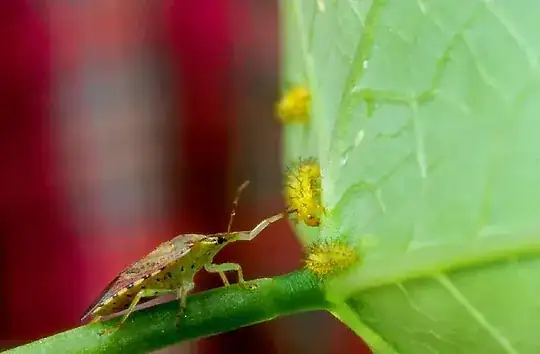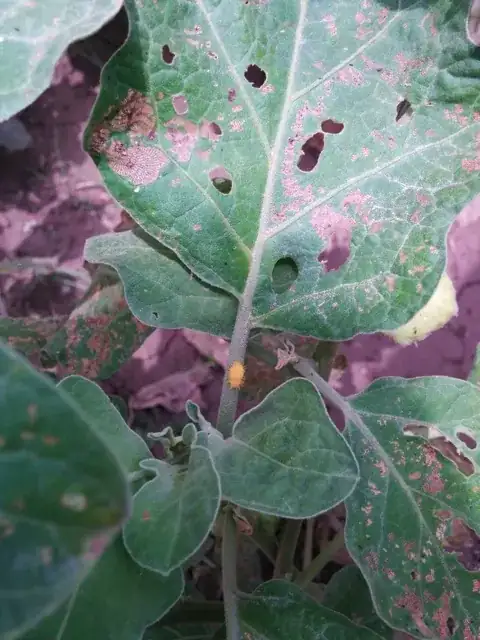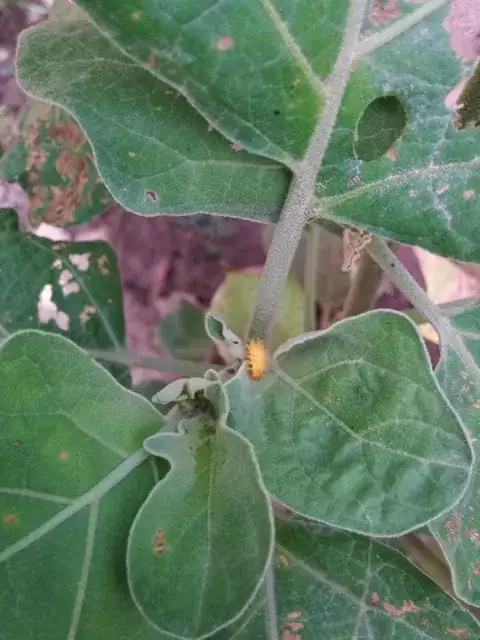Looks like Epilachna varivestis Mulsant (Mexican bean beetle larva) from Coccinellidae family.

Cultural Control: Cultural control efforts may include destruction of overwintering locations and late planting of the soybean crop. The
destruction of overwintering locations increases exposure to inclement
weather conditions and can greatly reduce adult numbers the following
spring. Under certain conditions, a combination of a trap crop with
delayed planting of a portion of the field might be used to advantage.
Since overwintering beetles actively forage upon emergence in the
spring, beans planted early will attract a disproportionate number of
beetles feeding during their preoviposition period.
Biological Control: Natural control organisms include at least 17 species of predators. They feed on bean beetle eggs, larvae and pupae.
The beetles are protected by hard wing covers and by an offensive,
yellow liquid which is secreted in small drops from the leg joints
when the insects are disturbed. Ten species of parasitoids are prevalent in soybeans
during the vegetative stages, but only the tachinid fly Paradexodes
epilachnae and the eulophid wasp Pediobius foveolatus seem to be
promising in reducing the number of bean beetles. Because P.
epilachnae is not native, it is necessary to import it when the
Mexican bean beetle is an important pest. P. foveolatus is a
parasitoid of epilachnine beetles from India. It parasitizes Mexican
bean beetle larvae during the growing season, but fails to overwinter
for lack of diapause capability and/or available host material. The
annual inoculative releases of this insect, if conducted early enough
and in conjunction with establishment of nurse plot areas of snap
beans in a widespread manner, are capable of suppression of the
Mexican bean beetle on soybeans.
Insecticides: For curative control in outbreak circumstances, several insecticides are currently available. Selection of an
appropriate insecticide and timing of its application are very
important. Studies of residual efficacy have dealt primarily with
soil-applied insecticides for Mexican bean beetle control. Certain
systemic insecticides can provide control for 70 days when applied at
planting or as a side-dress treatment during midseason cultivation;
these materials only provide control for half a season. The foliar
insecticides suppress Mexican bean beetle larvae for up to two weeks
posttreatment in garden beans and soybeans.
Reference: University of Florida
Quoted website talks about this pest in other plant species, but the tips can also be applied to Solanum melongena L. About biological control I can say that where I live we do not suffer this pest, in fact we use other species of the family Coccinellidae to combat aphids (and I know by experience that Podisus spp. may reduce population of Anatis ocellata L.).


